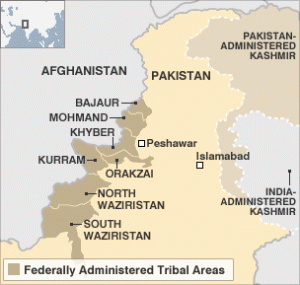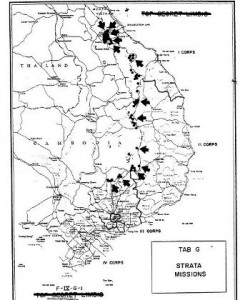Comparisons of Afghanistan to Vietnam were common during the Bush years but have slowed down considerably since he left office. Â Perhaps there are political reasons for this and perhaps there is just comparison fatigue, I am not really which. Â I bring this up because I had a conversation about this at lunch the other day and it got me thinking about it. Â From a purely military perspective, it strikes me that while the war in Afghanistan is not synonymous with the war in Vietnam there are some parallels that it is perhaps a comparison worth exploring. The story that brought the topic up is here: U.S., Afghans hope to rout expected Taliban offensive.
Here are the elements of both wars that make the discussion germane and probably need to be aired in a larger forum at least within the military community and probably within the halls of power in Washington. They are all things that while not making victory impossible, certainly make it difficult.
 The first and most glaring area of commonality to me between the two is the way in which the enemy is allowed sanctuary. In Vietnam it was sanctuaries in Cambodia and Laos, in Afghanistan it is in the oft cited “tribal regions†of Pakistan’s Northwest Territories. Here is a very good paper from the US Army Combat Studies Institute on the effect of sanctuaries in counter-insurgency warfare. Out of Bounds: Transnational Sanctuary in Irregular Warfare. The most notable passage in this paper for me is this:
| None of this is to say that the techniques for fighting the counterinsurgency in-country do not matter. The Americans were much closer to success in Vietnam than the Soviets ever were in Afghanistan. Indeed, denying the insurgents sanctuary at home is a necessary first condition for a successful counterinsurgency. However, it is not the last condition. As long as the guerrillas have a safe place to which to retreat and rest, and from which to gather resources and launch new attacks, they can fight as long as they have the will to keep on fighting.Bruscino, Thomas A. Jr, Out of Bounds: Transnational Sanctuary in Irregular Warfare, (Fort Leavenworth, KS: Combat Studies Institute Press, 2006) 80 |
The best question I can think of is why Coalition Forces and Colaition Governments in particular are not more insistent about denying the Taliban sanctuary. Allowing insurgents sanctuary is perhaps the biggest boon an insurgent can have. It is clear that sanctuary for an insurgent is not decisive but what it achieves for the insurgents is give them the ability to continue the fight as long they have the will to do so.


I have seen reports in the media that Iran is providing covert support for the Taliban and that is believable given the obvious enmity Iran has for the west but especially for the United States. Therefore, it is possible that as long as the Taliban can find recruits they can continue the fight. They may degrade to nuisance levels but sanctuary can and probably will let the Taliban survive, at least until they are finally denied sanctuary at which point they will probably not fade away but perhaps realize the futility of armed resistance and join the political process seeking a voice in the affairs of Afghanistan.
Another possible similarity is between the Strategic Hamlet program and the American practice of establishing Combat Outposts (COPs) in Afghanistan.
During the Vietnam War, there was a program to create so-called Strategic Hamlets in the Vietnamese countryside. The purpose of these was to create secure zones and by extension, as the program extended to ensure the security of the vast majority of the Vietnamese populace. It was hoped that as the program was fully realized the peasantry would not only be secure because of the extension of “pacified†areas, but also come to trust and depend on the South Vietnamese government for traditional government responsibilities. In practice, this did not really come to pass.
There were differences in the concept of what the program would do between the Americans and South Vietnamese and in the end neither side really bought into the program resulting in its failure. It was probably a good idea and if both sides had worked toward a common goal it might even have worked. As it was, the program dragged on for most of the war and did have some success.
The parallel for Strategic Hamlets in Afghanistan for me is the creation of remote Combat Outposts (COPs) near villages and infiltration routes used by the Taliban. One of the biggest problems in Afghanistan is logistical support and these COPs have been hamstrung by logistical limitations and the lack of availability of supporting aircraft and artillery. Afghanistan, especially the northeast border areas is forbidding terrain, which makes life difficult for coalition forces. The road network is practically non-existent and what does exist consists mainly of gravel trails that become impassable with almost the slightest adverse weather. American forces have come to depend on helicopters for resupply and in the winter months, there can be weeks where the weather is so bad it is literally impossible to fly. Lastly, the COP program is kind of poorly conceived because the COPs that do exist are not mutually supporting and are generally fairly small, platoon size is the average.
There was initially a perception that the Taliban were incapable of organizing and coordinating a successful assault on a COP. The lie to that was proved with the successful attack on COP Keating in Nuristan Province in 2009 that killed eight US Soldiers. COP Keating seems to have been located where it was because of political instead of tactical or operational considerations. The same seems to hold true of many of the COPs talked about in the open source press. The COPs were presented as good ideas that will increase security with no explanation of how they were to achieve that. My personal opinion is that the “good idea fairy†thought them up and was not responsible for their planning or implementation.
Thinking abstractly, it probably is a good idea to have troops billeted in close proximity to villages because it increases their reaction time to threats and most importantly, allows the afghan people to get to know and trust them if implemented correctly. The key for this is that the troops must interact with the locals more than just driving through town buttoned up in their vehicles. Appearing as aliens does not build trust; that was one of the biggest complaints I heard from local leaders in Iraq in 2004-2005. They could not trust us because they did not know us. In closing, there are some parallels between strategic hamlets and COPs but they are fleeting at best. The basic assumptions between the two programs were similar but the execution was totally different.

this dont help me with my homework
And what do you need to help you with your homework or should I ask what exactly it is that you are looking for?